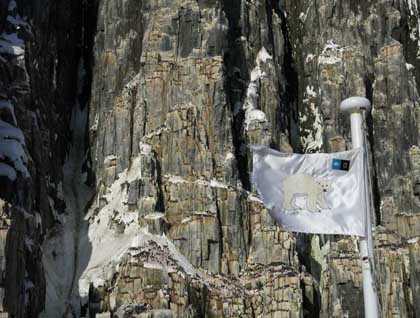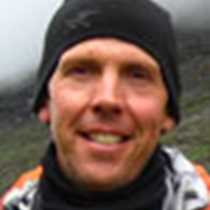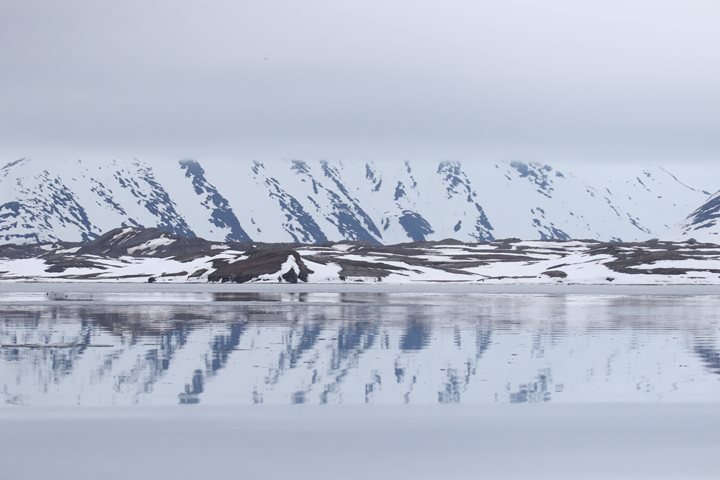The morning brought National Geographic Explorer around Kapp Fanshawe. An early wake-up call from Lucho, the expedition leader, stirred most of us to the bridge or the bow. As our eyes and bodies adjusted to the cold clear air we were treated to a truly spectacular sight, tens of thousands of pairs of Brünnich’s Guillemots. The scale of the cliffs and the density of birds at Alkefjellet was stunning, everyone smiling and shooting hundreds of pictures while the captain eased the ship’s bow into the nearby waters below the cliffs. On all sides guillemots floated in the thousands and above even more were flying to and from the cliffs. To the left and right of the ship we all struggled to comprehend the numbers of birds nesting in front of us.
Numb we all moved inside the ship to warm and eat breakfast while it continued south in Hinlopen Strait chasing our Arctic dreams. The waters of the strait were open and the shores lined with pack ice pushed by the wind into piles that hid the seals from the polar bears and the bears from us. Every now and then one or two walruses were seen hauled out onto the ice. A lone bear was spotted in the distance. The bridge was filled with eager observers hunting with binoculars and spotting scopes.
After lunch Eric, our photo instructor, spotted the next polar bear out in the distance on the fast ice of Wahlenbergenfjorden. As the ship was maneuvered into the edge of the pack ice, everyone emptied out on the decks to watch the bear. Soon thereafter, naturalist Bud located another bear with two cubs of the year. All four bears were far off and the spotting scopes and telephotos lens helped provide better looks. The captain then repositioned the ship as another bear was seen in the distance. Scanning the fast ice we counted many ringed seals which explained why we saw five bears at this one location. Fortunately the slight repositioning took us out of the wind and made the bear watching even more enjoyable.
Celebrating our day the ship’s kitchen prepared lobster and champagne on the back deck. While we enjoyed the food the ship turned back north. While everyone sought to unwind for the evening, Lucho and the captain conspired to take the ship north of the archipelago in search of the pack ice. As many were nodding off to sleep ice began to bang against the hull stirring us as we slipped further north.
Captain Leif Skog, an excellent observer, first noticed an ivory gull. These birds are often associated with polar bears that have made a seal kill on the ice. On cue, Eric our polar bear finder, searched and located a male laying on a large piece of ice. As the ship approached slowly the bridge and bow once again filled with eager guests. The bear appeared to be laying on something covered with snow, and as we approached more and more glaucous and ivory gulls landed around the resting bear in search of a meal. With the ship stopped we all watched the bear as it rested then decided to unbury the ringed seal it was laying on.
Memory cards full, we turned south after reaching our furthest north point on the trip so far, 80° 48.66’ N, 017° 03.39’ E, just 551 nautical miles from the North Pole.







